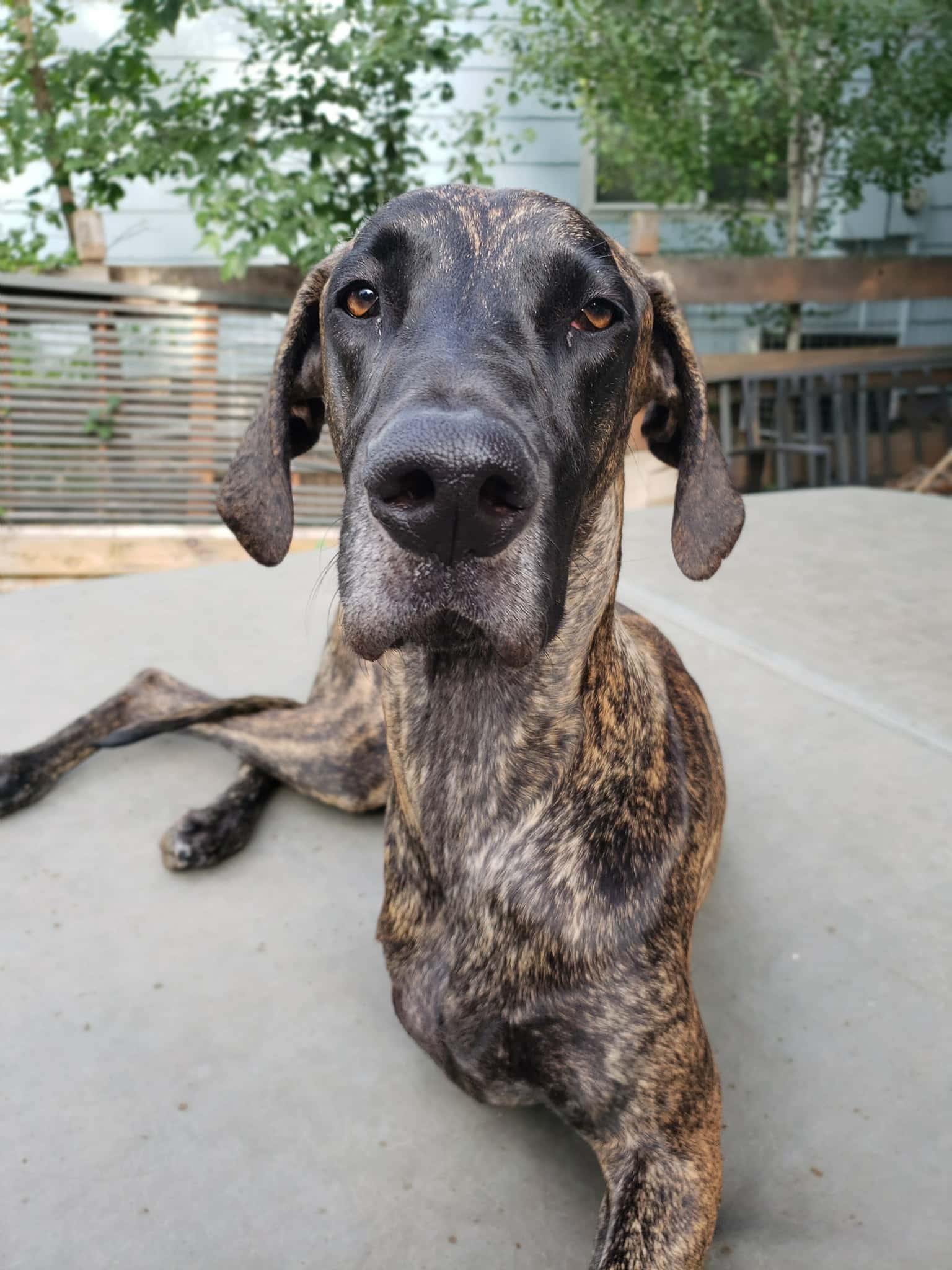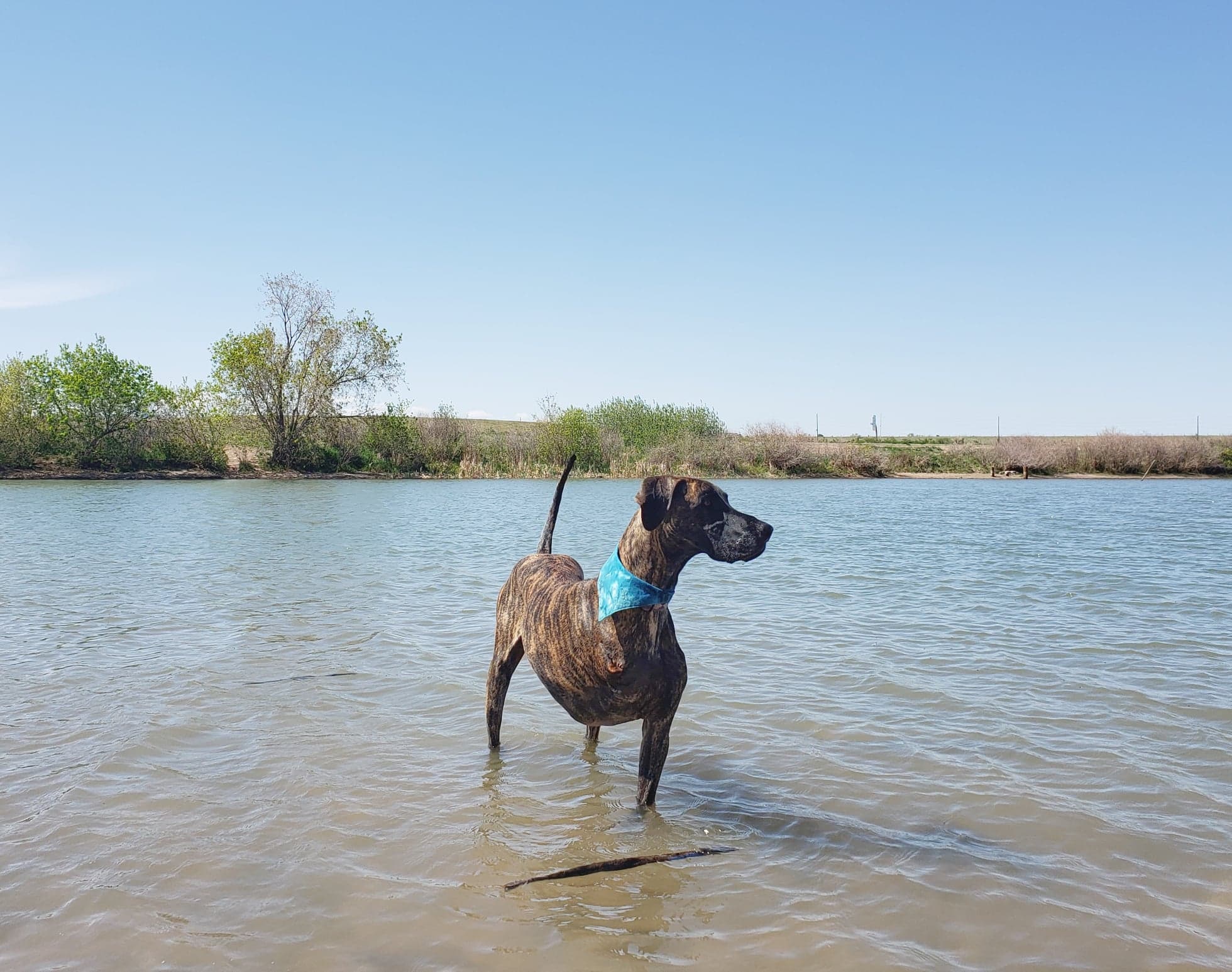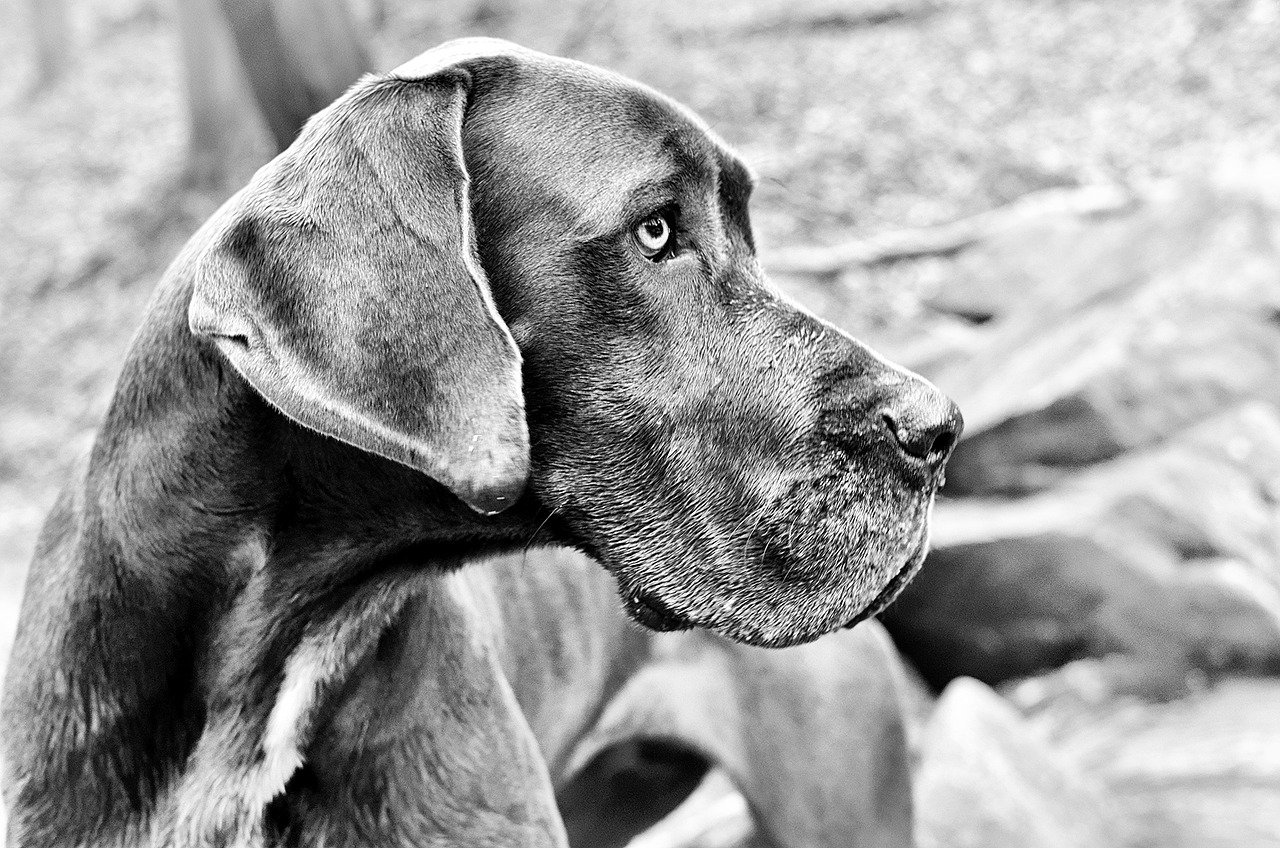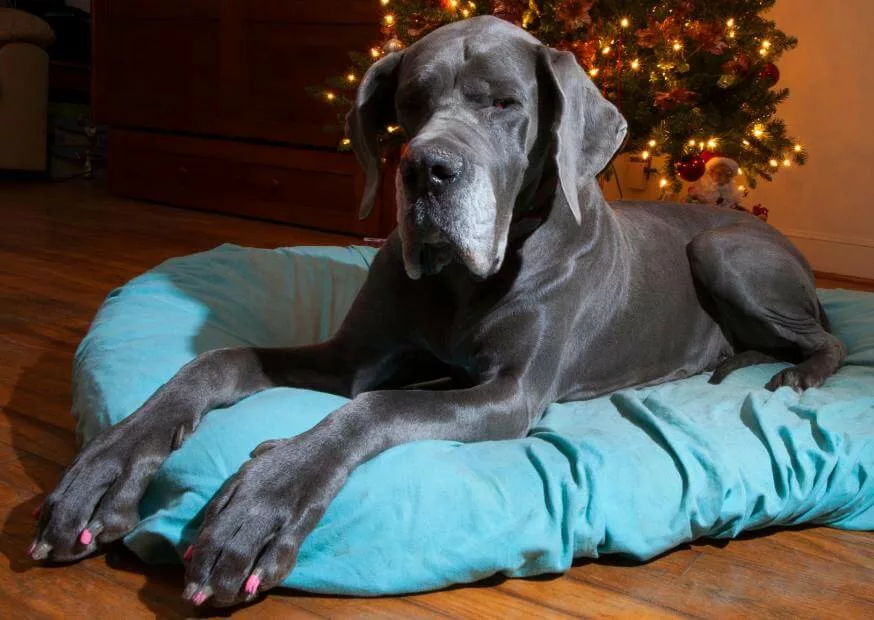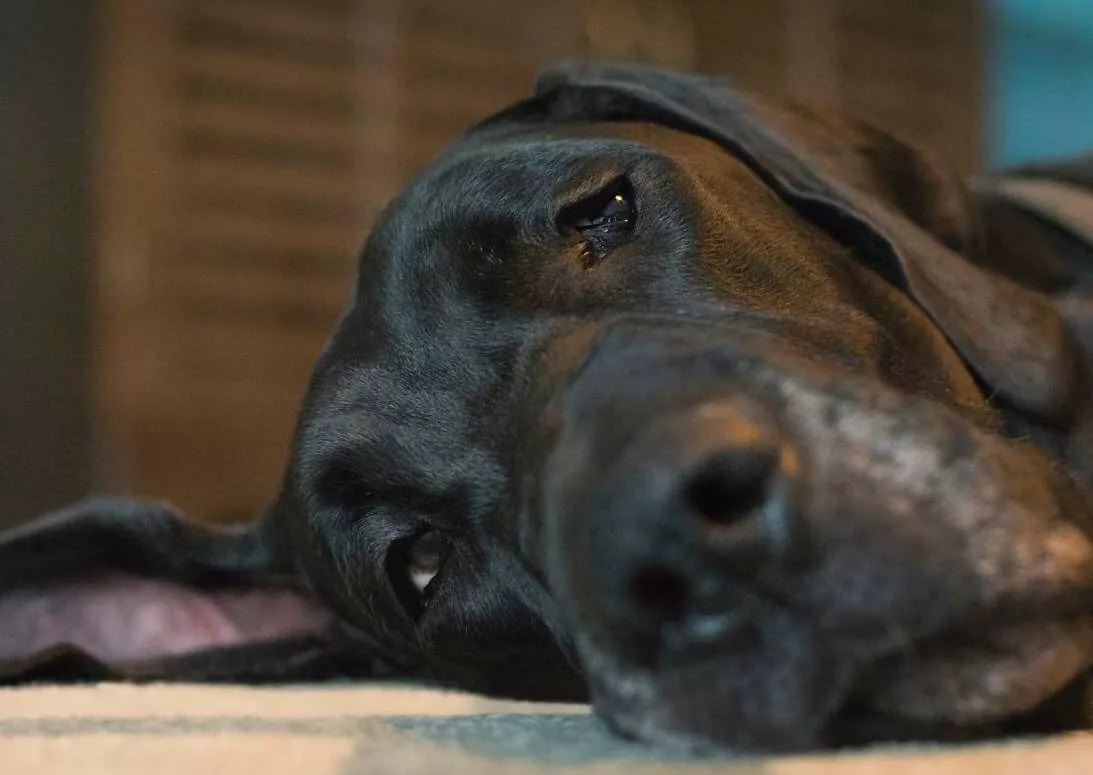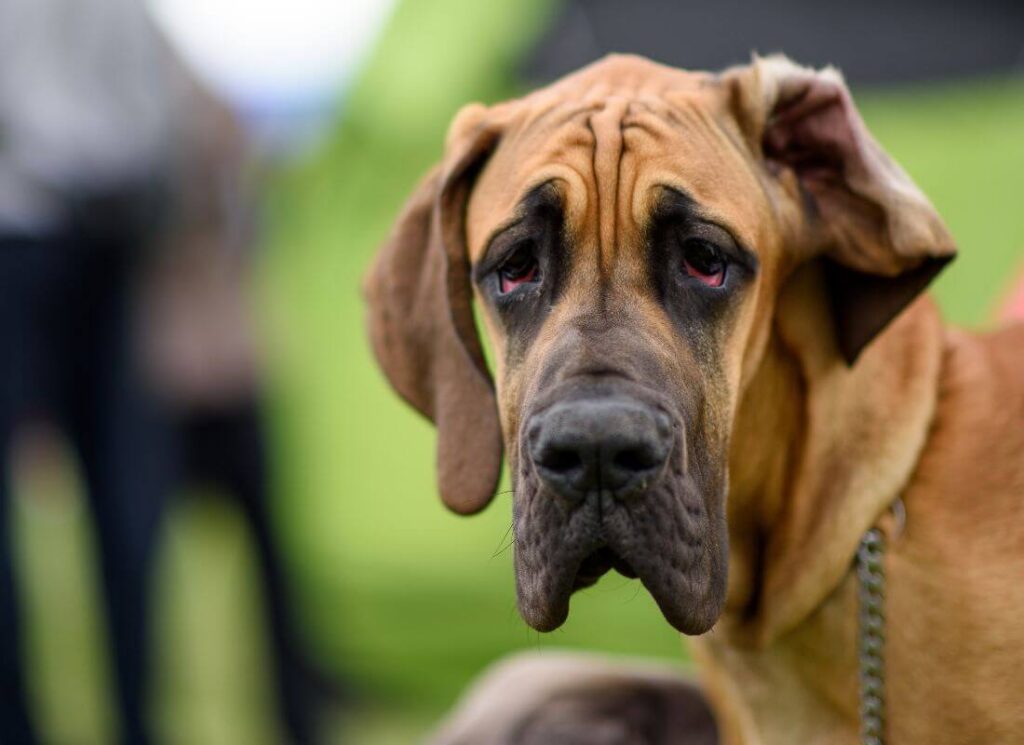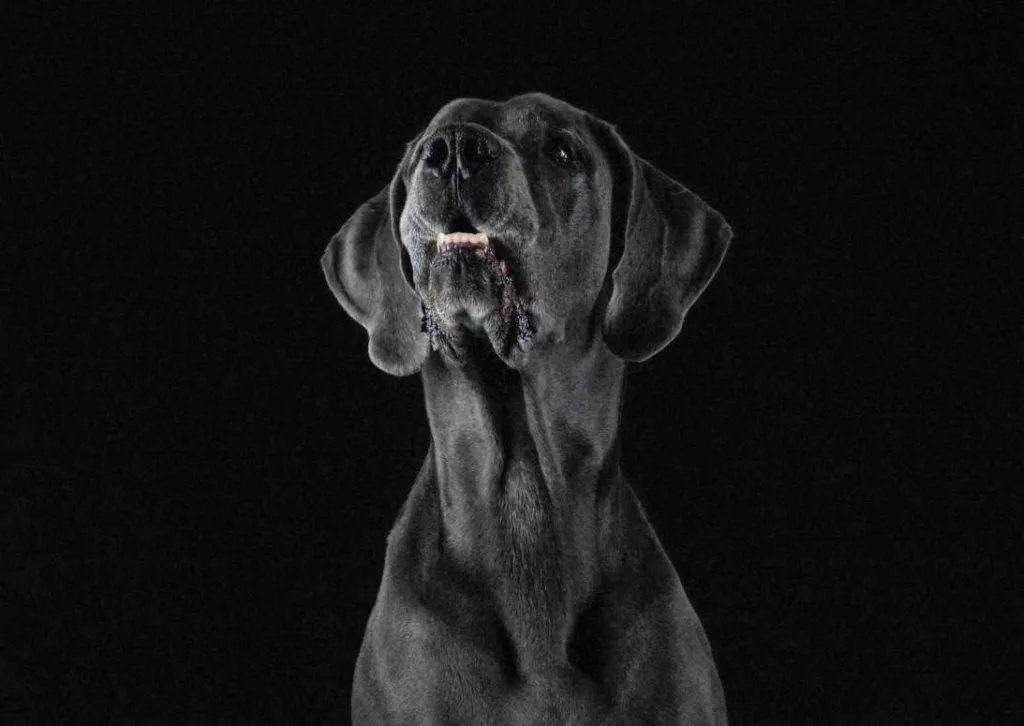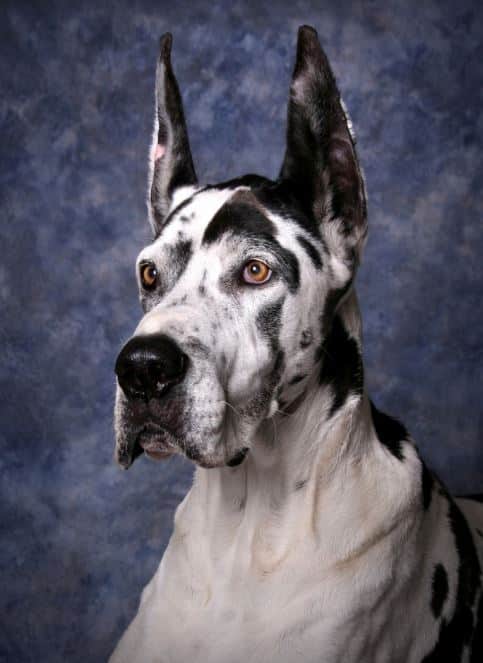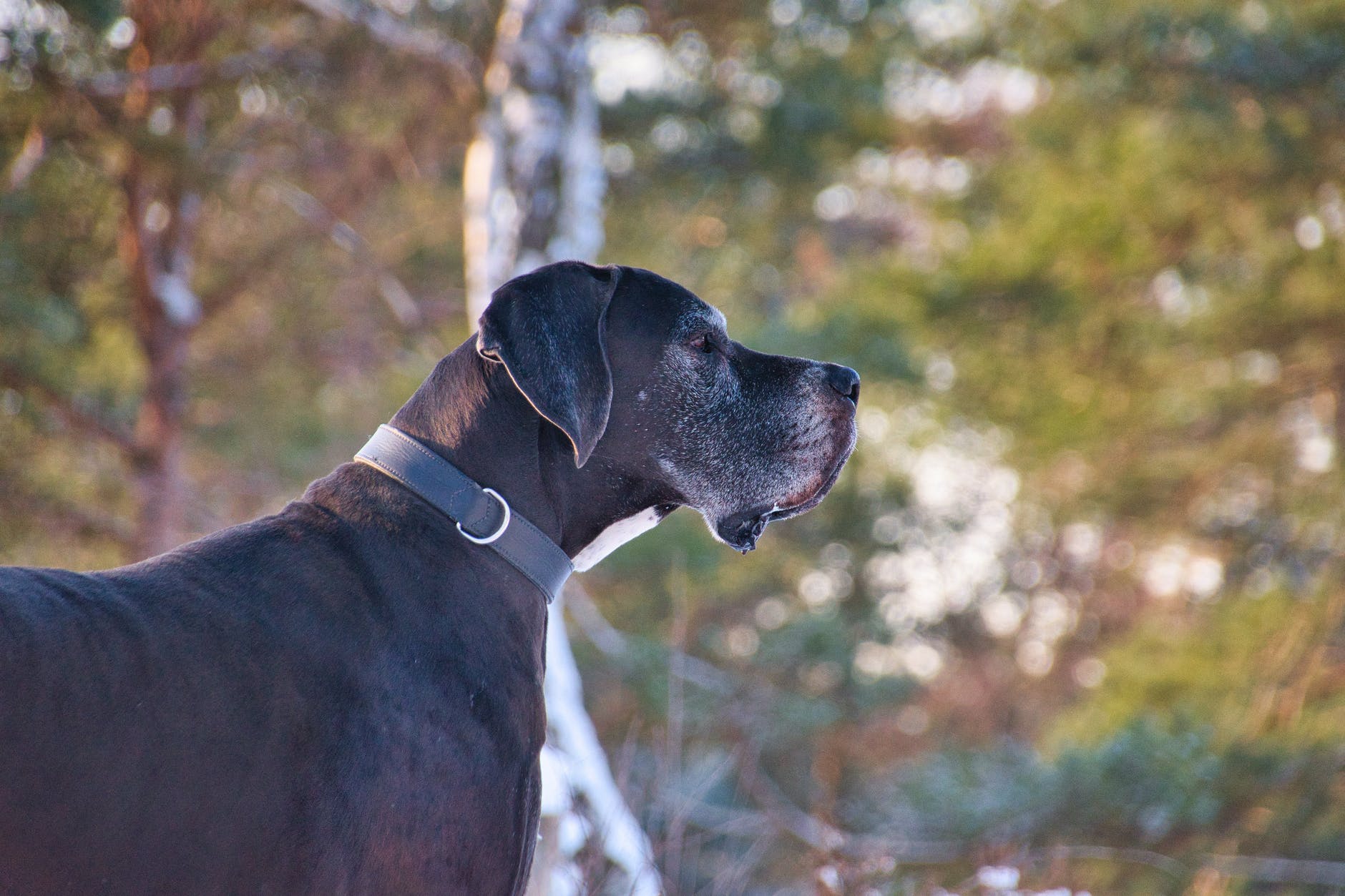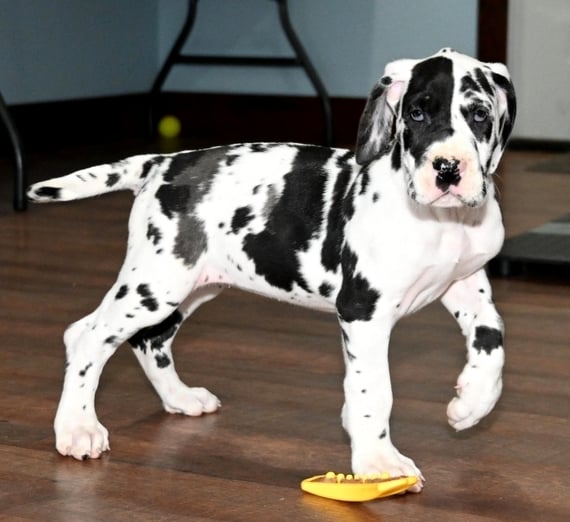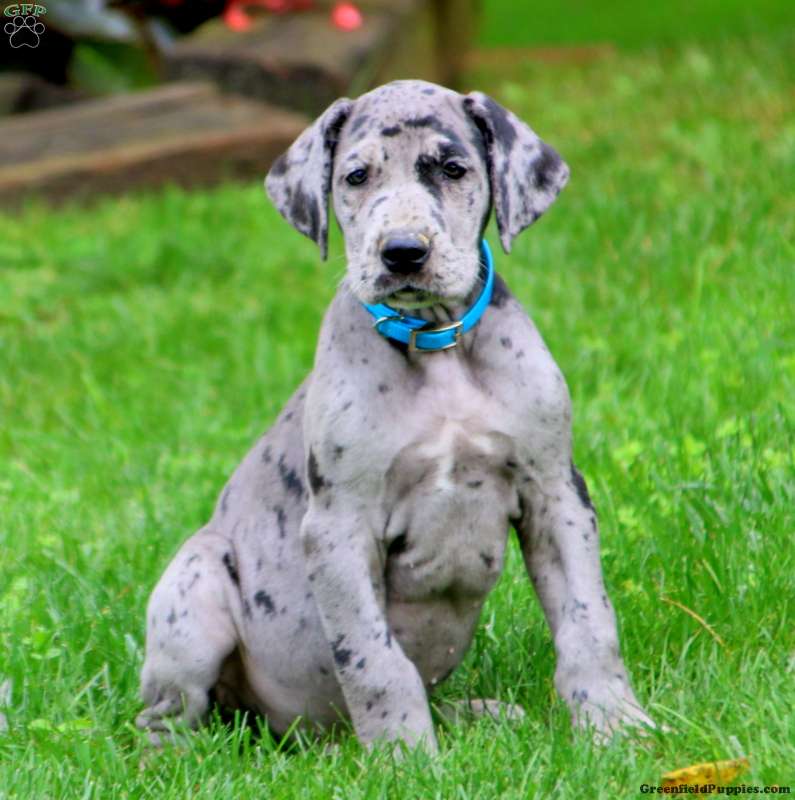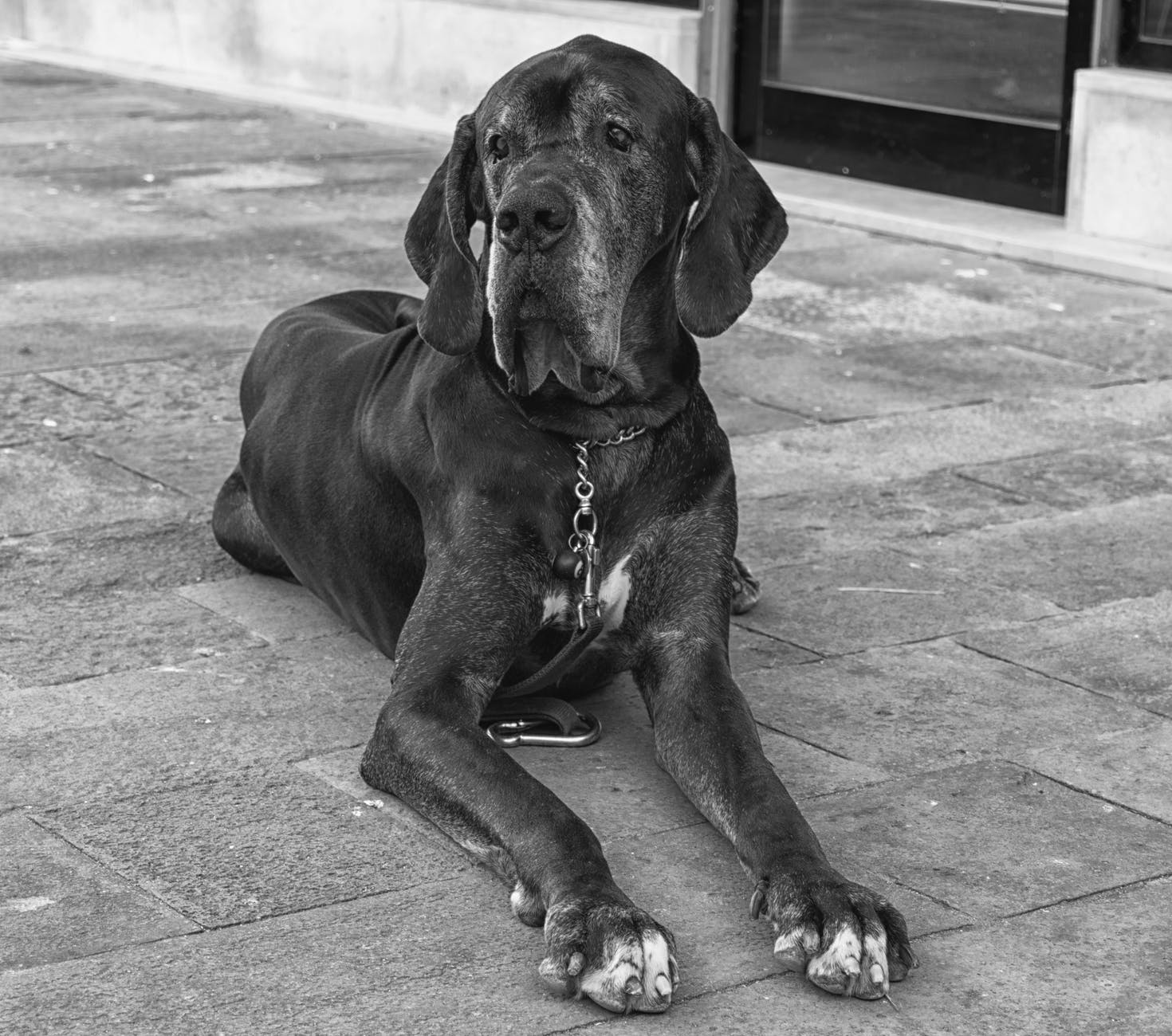Is there a difference between backyard breeding and front yard breeding?
Don’t most breeders raise puppies in their backyard?
What could possibly be wrong with breeding dogs in a home environment?
Is it backyard breeding if the breeder seems friendly and the puppies are clean?
What if a dog chooses to have her puppies in the backyard instead of inside? Is that the problem?
Isn’t backyard breeding BETTER than a puppy mill? I’d rather know my puppy came from a home and yard than a kennel!
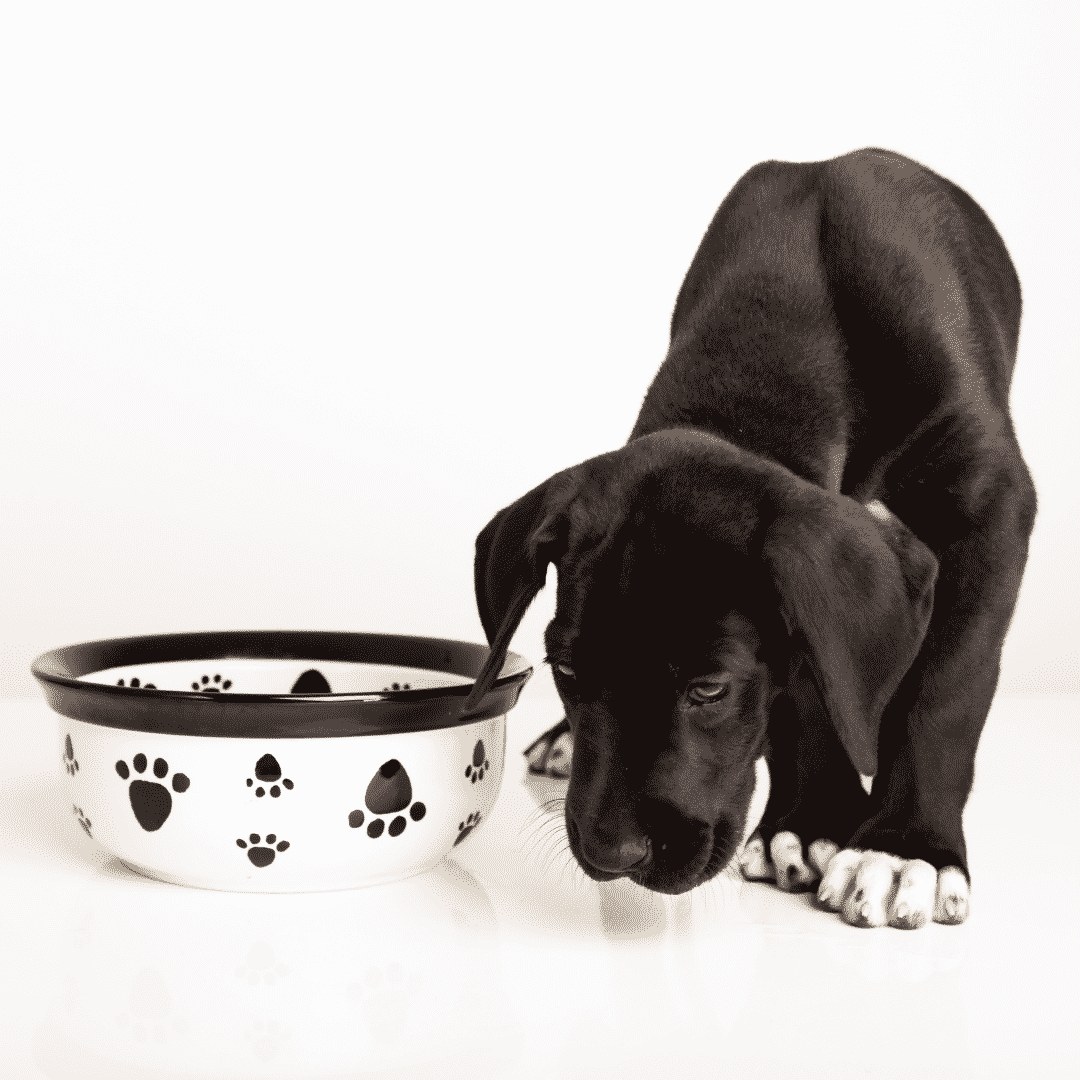
SO MANY QUESTIONS!
The good news is that none of those things have anything to do with breeding dogs in a backyard.
There is nothing wrong with a breeder raising puppies in their home environment, or for you as a Great Dane owner to want a ‘pet’, not a ‘show dog’.
Backyard Breeding is really just the term dog people have made up to describe people who are breeding random, low quality dogs ‘in their backyard’ to make cash.
These breeders aren’t necessarily interested in the health, structure, or temperament of the puppies they are creating, but they sure know how to get you to spend your money with them!
WHY IS BACKYARD BREEDING BAD?
Backyard breeders are often pairing two dogs for breeding that really should not be bred. They may have websites, ‘nice’ photos and even a nice home and clean puppies; however, they may still be unethical.
A Great Dane is not a Great Dane is not a Great Dane. AKC papers, Euro build and ‘neat colors’ are NOT enough to justify breeding two dogs together.
Backyard breeders, even the ‘nice’ friendly ones, are directly responsible for the number of dogs needing rescue, and for the ongoing health and temperament problems we see in Great Danes.
SIGNS OF A BACKYARD BREEDER
- They will have no records of proper health testing or only did some of the testing (ask for Full OFA tests with certificate & CHIC# to verify at www.ofa.org, or similar standard in other Countries
- They may market dogs primarily using buzz words such as ‘papered’, ‘designer colors’, ‘healthy’, or ‘Euro %’.
- They may send puppies home to buyers prior to 8 weeks of age.
- They will not have a lifetime return guarantee.
- They will not have buyers sign contracts.
- They will will not care if a buyer chooses to breed their dog.
- They may encourage buyers to purchase two puppies at the same time.
- They may advertise on marketplace or Craigslist, post repeated sales in local groups and may have a hard time selling puppies.
- They won’t be willing to show the parents, or the parents will be unkempt, heavy, untrained, or aggressive.
- The puppies may be timid, round, hunched, dirty, bug-eyed, and may look sick or weak.
- The breeders home and/or whelping area will be below standard, dirty, and may lack appropriate enrichment for the dogs and puppies.
Every time you support a backyard breeder, you support the creation of the exact types of dogs that strain our system of shelters and rescues. The rescues are here because of these dogs, and the unfortunate truth is that the backyard breeders do not care.
Oh be serious. ANY dog can end up in rescue, even one from an ‘Ethical’ breeder, so don’t blame this on the ‘backyard breeders’… right?
WRONG.
Ethical breeders care very much about structure, health and temperament.
They actively work to produce puppies that are unlikely to suffer from genetically related health problems such as hip dysplasia, bloat and entropion that cost owners heartache and money.
They aren’t creating white double merle dogs that end up in rescue when they cannot find somebody who wants a snappy, under-socialized 4 month old deaf puppy with no eyes.
They closely follow the written standard, and ask for feedback from their peers so that the dogs they breed look and act like healthy, robust, calm, loving Great Danes with strong features and beautiful structure..
They are picky about buyers and educate them well, because they know that the wrong home could mean a dog ends up being neglected, dumped, or used for backyard breeding.
They want the puppies they sell to have outstanding temperaments, so they are much less likely to end up in rescue because they became ‘too aggressive’, bit a child, or couldn’t be handled by the average pet owner.
Most of all, ethical breeders have a LIFETIME return guarantee. They support buyers with education and will take any dog back during its life for any reason.
Ethical breeders are NOT the reason that so many dogs are in rescue. Backyard breeders are. Still don’t believe us? Look at any rescue. Are any of those adoptable dogs from a breeder that would take the dog back themselves, give it vet care and help it find a home?
RUFFLED FEATHERS?
We understand that a post like this may ruffle some feathers.
Perhaps you have a dog that came from what you now realize was a ‘backyard breeder’, and a post like this can feel like an attack (especially if your backyard bred Great Dane is a loved family pet, as mine is). For that, we apologize.
We believe all Great Danes deserve love and a fantastic home, including the ‘imperfect’ ones, and especially the ones that need our help.
You got lucky with one of the special ones; but that’s not the point of this post.
Perhaps you are a breeder, and don’t like that we are calling you out. We don’t apologize for that. You will not change our minds. We do not respect that you skip OFA health testing, or that you are breeding dogs that barely look like Great Danes, or that the puppies you create have roached backs, entropion, and timid personalities.
We don’t respect that you throw around terms like ‘papered’ and ‘health tested’ just to make a buck. We also don’t respect your defensiveness towards improving your program and operating ethically. Try us, but be warned. We are pretty fed up with backyard breeders and know all the ‘lines’.
Our hope is that every owner with a loved family dog from a backyard breeder, every owner whose backyard bred dog died painfully at a young age, and every owner who is interested in purchasing a Great Dane will read this article and help us stop the cycle moving forward.
These dogs are too big to be given anything other than the chance at incredible health and wellness. Stop funding backyard breeders. Start holding breeders to a HIGHER standard. Our dogs deserve it!

